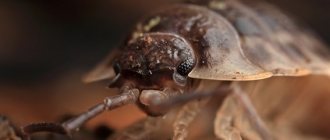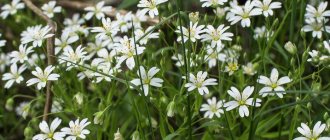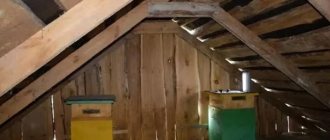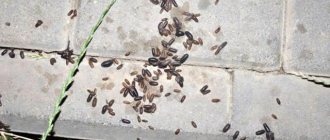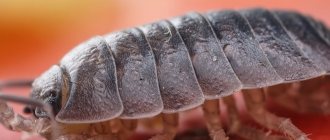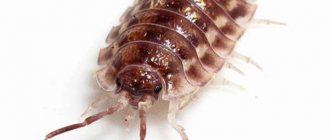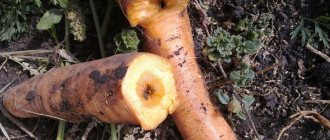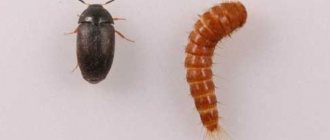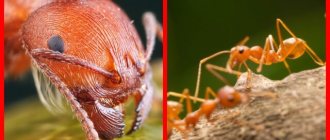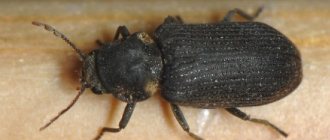Weed control in the garden is an eternal problem. In a landscaped area, you want to create optimal conditions for garden crops and get a decent harvest, but weeds, including woodlice, resist this in every possible way, robbing vegetables of both nutrition and space. How to get rid of woodlice on your property forever is a task that requires some effort.
Weeding
Don't underestimate woodlice. Eliminating weeds in your garden won't be quick or easy. Only regular and varied prevention of occurrence is effective. The most common and fairly effective way to destroy woodlice is weeding. However, weeding will not completely destroy the grass if you leave the caused plants on the site. Even crushed particles can take root when exposed to water. Not to mention the fact that woodlice can reseed even from torn out bushes.
Woodlouse - description and lifestyle
In nature, it is quite possible to find woodlice in shaded, damp places such as the banks of ravines or damp forest clearings. However, most of all this plant loves to settle near people - it lives in landfills, under fences, near houses and, which especially irritates summer residents, in the garden.
Despite the fact that this plant is low and inconspicuous, with tiny leaves and thin stems, it is a real malicious weed that is very difficult to get rid of.
The fact is that woodlice produces a huge number of seeds - there can be 5-15 thousand of them from one plant! These seeds are perfectly preserved under snow and remain viable for up to five years. In addition, chickweed reproduces well vegetatively - by rooting creeping branched stems, which produce new shoots and roots from each node. In this way, the plant develops from early spring until the onset of frost, giving 2-3-4 generations over the summer and quickly covering your area with a dense “cheerful” green carpet interspersed with white flowers, depriving cultivated plants of nutrition and moisture, deteriorating the condition of the soil and giving shelter to numerous pests.
In nature, in dense grass cover, woodlice cannot withstand competition with powerful perennials, but it really likes beds with loose, moist soil and sparsely planted vegetables. This is especially true in the spring and the habitats of garden crops that germinate slowly.
And also, as we have already written, this plant is extremely shade-tolerant, adapted to both cross- and self-pollination, frost-resistant and unpretentious - what is not an ideal weed?
Normalization of soil acidity
Weeds grow faster in acidic soils. Therefore, it is important to ensure that the acidity level is neutral. To reduce the acidity of the soil, you can use crushed egg shells, ash, dolomite flour or plaster.
However, it is not recommended to add these components during the period when fertilizing with urea or superphosphates is carried out. Alkaline fertilizers should be applied in spring or autumn when digging the soil. You can water the ground with a solution of ash with the addition of sulfur. This will help normalize the acidity of the soil and prevent excessive weed growth. However, when using alkaline solutions, moderation must be observed. Otherwise, the soil can become unusable.
How to deal with woodlice in your summer cottage and garden plot
01/21/2020 Woodlice (lat. Oniscidea
) scientists classify them not as insects, but as a suborder of crustaceans. In total there are about 200 species in nature.
Woodlice love high levels of humidity, feeding on both living and rotten plants.
Of the entire order of crustaceans, these pests are the most adapted for life on land.
Since wood lice eat exclusively plant foods, they are capable of causing significant damage to garden crops, eating up the roots of young seedlings, destroying leaves and seeds just sown in the ground.
Damage on leaves usually takes the form of through holes, which the pest inflicts while located on the upper parenchyma, since it is not adapted to crawl along the back side of the leaf.
As a rule, woodlice are nocturnal. With the onset of dusk, they leave secluded places in which they hide during daylight hours and go in search of food. During the day, they can be found in fairly damp and shaded places, for example, in the crevices of buildings, under wet stones, under the trunks of old trees, as well as near garbage pits, wells, boreholes and other sources of water. Woodlice can also be found in dense green spaces, including weeds.
Many species of woodlice live off the shores of both freshwater and fairly salty bodies of water.
They also often settle in human housing, settling primarily in bathrooms, showers, and inhabiting damp cellars and basements.
Description of the pest
Typically, the size of woodlice does not exceed two centimeters in length, but there are also giant varieties whose length reaches 30 centimeters.
The body of woodlice has a convex, oval shape and is usually colored in grayish shades. Visually, the body is divided into several separate segments. In this case, the first thoracic segment covers the head from the sides, the eighth is equipped with a deep posterior notch, and the remaining seven each contain a pair of small abdominal legs.
On the head of the woodlouse there are two pairs of whiskers, one of which is well developed, and the second is underdeveloped. The eyes are located on the sides of the head.
The back contains durable chitinous plates that act as a protective shell. On top they may have intricate patterns reminiscent of oriental hieroglyphs.
Usually, at a moment of danger, the woodlice curls up into a ring and pretends to be dead.
Reproduction of woodlice
Unfertilized female woodlice contain two openings on the fifth abdominal segment leading to the spermatheca.
Typically, copulation of females with males occurs in the spring, with the onset of warm weather, in April or May. At the moment of fertilization, the spermatic receptacles are filled with the seeds of male individuals, burst and enter the oviduct. As soon as this happens, the female's body structure changes and she moults. In this case, fertilized embryos are transferred to a special chamber, where their further development occurs.
After the release of the offspring, the female molts again, shedding the old skin, and takes on its original appearance.
The life cycle of woodlice lasts from 9 to 12 months.
What danger do these pests pose?
Woodlice cause the greatest damage to plants with a shallow root system, including vegetables, ornamental plants and flowers.
They are also able to penetrate greenhouses, greenhouses and greenhouses, where they can also harm plants, causing significant damage.
The pest does not ignore crops stored in cellars and basements, damaging vegetables, tubers, root crops and fruits.
In addition, woodlice are distributors of many dangerous fungal and bacterial infections that infect plants.
Methods of pest control
As with insects, before removing wood lice, it is necessary to determine the cause of their appearance.
If woodlice are found inside a living space, you should carry out a thorough inspection of the house: throw away all old wet rags, thoroughly wash the floor in hard-to-reach places, inspect indoor flowers, and clean kitchen cabinets of unusable and moldy products.
Of the indoor plants, orchids and ferns are most often infected.
A prerequisite for the normal functioning of woodlice is the presence of water or a high level of humidity. For this reason, when woodlice are detected, their access to moisture should be cut off. This is especially important in the case of pests infesting greenhouses, greenhouses, cellars and vegetable gardens.
To remove woodlice from cellars, quicklime is usually used. It should be placed in low containers, which are then placed on the floor in the most humid places.
If the pest was noticed in a greenhouse or conservatory, then it is advisable to thoroughly dry the soil inside these rooms and temporarily reduce the number of waterings.
To combat woodlice, universal preparations “Mole”, “Ideal”, “Aktara”, “Grom” are usually used, designed to get rid of moths and ants, as well as gel bait “Schabenge” or “Varan”.
When using chemicals, you must first read the instructions for their use and in no case exceed the recommended dosage. Otherwise, it may cause harm to living beings and plants. This is especially important if there are small children or animals in the house.
During processing, it is advisable to use gloves and protect your face with a gauze bandage or a respirator.
Folk remedies for pest control
Many homeowners fight woodlice using a solution infused with ground hot red pepper, salt and tobacco. To prepare it, you need to take 3 grams of each substance, and then infuse it in a liter of water, and then spray the resulting water mixture on the areas where wood lice are most concentrated.
These crustaceans also show intolerance to ordinary kitchen salt, so it can be safely placed in places where pests live and appear.
To combat woodlice, you can also use a saturated saline solution, which is recommended to be sprayed with a hand sprayer, spraying all problem areas.
In a garden plot, you should not spread salt directly on the beds, as it can have a negative effect on plants, inhibiting their growth.
Boric acid has a destructive effect on wood lice. To prepare a boron solution, you need to take 10 grams of powder and then dilute it in 500 milliliters of water. It is advisable to treat areas where pests accumulate with the prepared solution.
Once on the woodlice, boric acid begins to gradually corrode its chitinous shell, which ultimately leads to the death of the pest.
You can also collect and destroy pests using a simple trap. To do this, in the evening you need to place rags moistened with water in the places where wood lice appear. By morning, a lot of woodlice will gather under them. Next, they should be carefully shaken out into a wide container, and then poured with boiling water.
Instead of rags, many summer residents use wet paired birch brooms.
In wooden houses, woodlice can live in places where there are areas of damp wood or rotten coverings. Special attention should be paid to such places.
In any case, it is easier to prevent wood lice than to eliminate the consequences of their appearance. Therefore, it is important to initially keep your home clean and dry.
There is no need to be afraid of wood lice.
Despite their threatening and repulsive appearance, these creatures are completely harmless and are not capable of causing harm to humans. Share on social networks:
Chemicals against woodlice
If woodlice appears in the garden, experienced gardeners can tell you how to fight it. They recommend using chemicals. The most effective are Tornado, Hurricane and Roundup. Treatment with these preparations is recommended only in areas where crop plants do not grow. Otherwise, processing must be targeted.
See also: “Cucumbers in a greenhouse: folk feeding methods.”
When there is a need to get rid of woodlice
Woodlice are crustaceans, although their shell is not very hard. They are gray in color and usually no more than 1–2 centimeters in size. They are mainly nocturnal, feeding on both rotting plant fragments and fresh shoots. They live only in very moist places, and especially like to settle in compost heaps. During the day, like slugs, they prefer to hide under any horizontal shelters: stones, boards, slate, etc. If there are very few woodlice, you don’t have to sound the alarm, but you shouldn’t let them reproduce: you should choose a strategy and start the fight.
If more than a dozen woodlice gather in one place, soon there will be quite a lot of them
Folk remedies
Opponents of the use of chemicals need to know how to get rid of woodlice in the garden using folk remedies. The most effective folk remedies:
Salt. It is necessary to sprinkle salt around the bed. When watering or raining, the salt dissolves and penetrates the soil. On such soil, woodlice grows poorly and disappears completely over time.- Soda. Helps reduce soil acidity. It is necessary to prepare a soda solution and pour it over the areas with wood lice. They must be at least 30 cm away from the planting of cultivated plants.
- Vinegar. The bite solution has a detrimental effect on woodlice. Just spray it on the weed to kill it. However, vinegar can also damage cultivated plants, so it can only be used on empty beds.
It is not easy to destroy woodlice on the site. Therefore, the main task is to prevent its appearance in the garden. It is necessary to reduce the use of fresh manure to reduce the likelihood of woodlice.
Information about the woodlice plant
The scientific name of the common woodlice is chickweed. Its other names are associated with some medicinal properties and a predisposition to rapid growth on moist soils - woodlice, midge, midge, hernia grass, heart grass.
A low herbaceous plant with succulent stems and small rounded leaves. It blooms throughout the growing season with small, star-shaped white flowers. From the beginning of flowering to the complete ripening of the seeds, 4-5 weeks pass, then the next cycle begins, and so on throughout the growing season. About 15,000 seeds can ripen on one bush per season.
Information! The seeds are very resistant to external factors and remain viable in the soil for a long time, from 2 to 5 years. For germination, a temperature of +4°C is enough for them, so they germinate earlier than other plants.
How to protect a greenhouse
It is important to understand that it is better to prevent the appearance of parasites that harm growing garden crops than to later fight them using various methods.
To ensure that your greenhouse and its future harvest are not damaged:
- after harvesting, pour boiling water over the soil and dry thoroughly;
- for prevention, use one of the traditional methods or an approved chemical drug;
- treat all external surfaces with a disinfectant solution: a concentrate of water and laundry soap is suitable; for greater effectiveness, add copper sulfate to the solution;
- periodically renew the soil to prevent rotting;
- provide sufficient light and good ventilation;
- Avoid moisture accumulation and condensation.
Woodlice do not cause global harm to either human health or seedlings, but the very understanding that unpleasant insects are crawling on fresh leaves causes a feeling of disgust. Follow simple rules, and these moisture-loving crustaceans will bypass your warm, light and dry greenhouse.
Chemicals to kill pests
A feature of the use of pesticides to eliminate pests is the reliability of the drugs and their high efficiency:
- 48 hours after treating vegetable plantings with Fozalon, woodlice die. The advantage of the drug is its effect on pests even at low air temperatures. But systematic use of a chemical can cause the development of resistance to it. When using a pesticide, care must be taken, as it is a highly toxic drug.
- Spraying plants with Permethrin is used to combat harmful insects, including woodlice. The drug effectively destroys leaf-eating pests and also has a pronounced repellent effect. The validity period of the product is from fifteen to twenty days. The substance decomposes in the soil without having a negative effect on plants. The pesticide is completely harmless to humans, but causes irritation when it comes into contact with mucous membranes and skin.
- Metaldehyde damages the mucous membranes of crustaceans, which leads to their death. The pesticide in the form of a crystalline substance is scattered in the area of active life of woodlice.
Chemicals must be used in accordance with the instructions for use and precautions.
Features of the pest
Features of woodlice:
- The root system is weak and fragile, so the weed is easily pulled out along with the roots.
- Woodlice has elastic shoots and small egg-shaped leaves with a pointed tip.
- Stems up to 15-30 cm long, highly branched, cylindrical in shape.
- During the flowering period, woodlice is covered with small white flowers resembling stars.
- The weed is distinguished by its extremely rapid spread, since up to 10-15 thousand seeds ripen on one plant.
Before getting rid of woodlice in the beds, you need to remember that this plant is known for its ability to grow very quickly - this leads to rapid drying out and even death of cultivated plantings, which are forced to “share” nutrients and moisture. The roots of the weed impoverish the soil, and its thickets create favorable conditions for the growth of bacteria.

